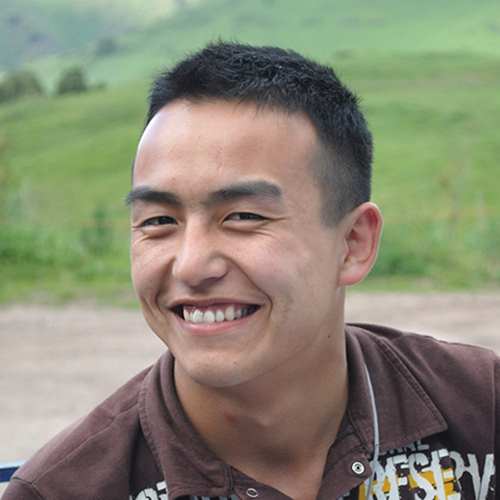
18 Apr Aibek Samakov – Kyrgyzstan
“In the Spotlight” is a series of interviews that takes a closer look at the work of CCRN students and their research. Read more to learn about our students’ research and the communities they work with.

Aibek is currently a PhD student at the University of Tübingen in Germany, where he is a member of the team investigating the “‘Social Life’ of a river: environmental histories, social worlds and conflict resolution along the Naryn-Syr Darya”
Aibek Samakov is a CCRN fellow who completed his master’s degree under the supervision of CCRN member Dr. Fikret Berkes. His thesis took a closer look at the two different management practices observed in the Ysyk-Köl area of Kyrgyzstan – sacred sites and the Biosphere Reserve. Aibek’s interest in sacred sites, as a method for conservation, can be contributed to his work with the Aigine Cultural Research Center (Aigine CRC) based in Bishkek, Kyrgyzstan. “Aigine CRC documented the sacred sites and traditional knowledge throughout the Kyrgyz Republic. My work at Aigine CRC sparked my interest in sacred sites and traditional knowledge and their implications for biocultural diversity conservation,” says Aibek. While completing his thesis the CCRN became a unique platform for networking and learning.
Continue reading to learn more about Aibek’s thesis “Sacred Sites: Opportunity for Improving Biocultural Conservation and Governance in Ysyk-Köl Biosphere Reserve, Kyrgyz Republic,” and the insights Aibek gained while completing his master’s degree.
What was the topic you addressed in your thesis?
In my research, I looked at sacred sites in Ysyk-Köl area of Kyrgyzstan as community conserved areas. Sacred sites represent areas of land and bodies of water which are spiritually and culturally meaningful for local people. The study mapped about 130 sacred sites, which are conserved-through-use by local communities and represent traditional model of conservation. The entire territory of Ysyk-Köl region is formally protected as a UNESCO Biosphere Reserve. Thus, sacred sites, as traditional model of community conserved area, are embedded in the formal government-run Biosphere Reserve. I looked at how these two models of conservation (sacred sites and the Biosphere Reserve) co-exist in the same territory and interact with each other. Results indicate that these two models are parallel. However, recognition of sacred sites can improve formal conservation by: a) providing a complementary culture-based set of incentives for conservation, b) fostering a biocultural approach, and c) serving as a communication hub for Ysyk-Köl Biosphere Reserve managers and local communities.
What excites you about the work you did for your thesis?
I was most excited by working with traditional ecological knowledge (TEK) and bridging it with the scholarly domain. This experience convinced me that reinforcing links between TEK and science can bear benefits both for scholarship and on-ground biocultural conservation.
How does your research affect the communities you worked with?
I cannot claim that my research affected the communities in an exceptional way. The sacred sites have been one of the defining elements of kyrgyzchylyk (the Kyrgyz-ness). In local narratives, the sacred sites are usually described from a cultural and spiritual perspective, whereas conservation-related aspect of sacred sites is more of a spin-off effect of sacred sites’ spiritual significance for local people. In my opinion, my research draws local communities’ attention to the ‘instrumental’ value of sacred sites for conservation in addition to their intrinsic value as biocultural phenomena.
What do you think are the next steps for learning more about the topics you addressed in your thesis?
The next steps would be investigating/developing ways for meaningful and equitable inclusion of sacred sites into formal conservation strategies.
Browse Aibek’s Publications to learn more about his work in Community Conservation
Samakov A, and Berkes F. 2017. Spiritual commons: sacred sites as core of community-conserved areas in Kyrgyzstan. International Journal of the Commons. 11(1).
Samakov A, and Berkes F. 2016. Ysyk-Köl Biosphere Reserve, Kyrgyzstan: Sacred Sites Help Improve Conservation in Protected Areas. CCRN Community Story.
Samakov A. 2015. Sacred Sites: Opportunity for Improving Biocultural Conservation and Governance in Ysyk-Köl Biosphere Reserve, Kyrgyz Republic. Master’s Thesis, University of Manitoba, Canada.
3MT Video by Aibek Samakov – “Sacred Sites: Conservation of Nature through Mechanisms Rooted in Culture.”


